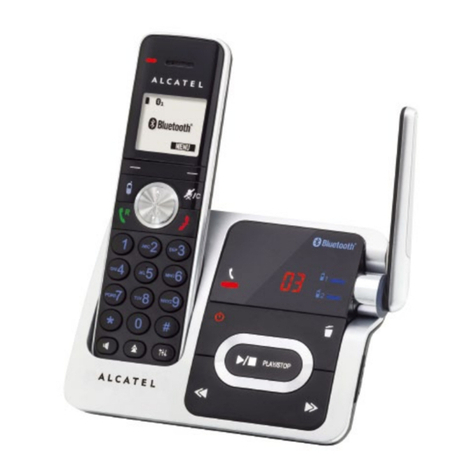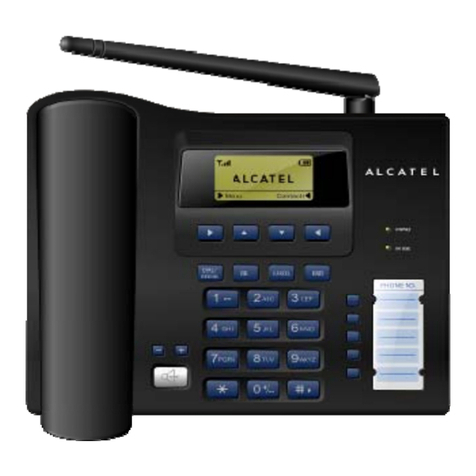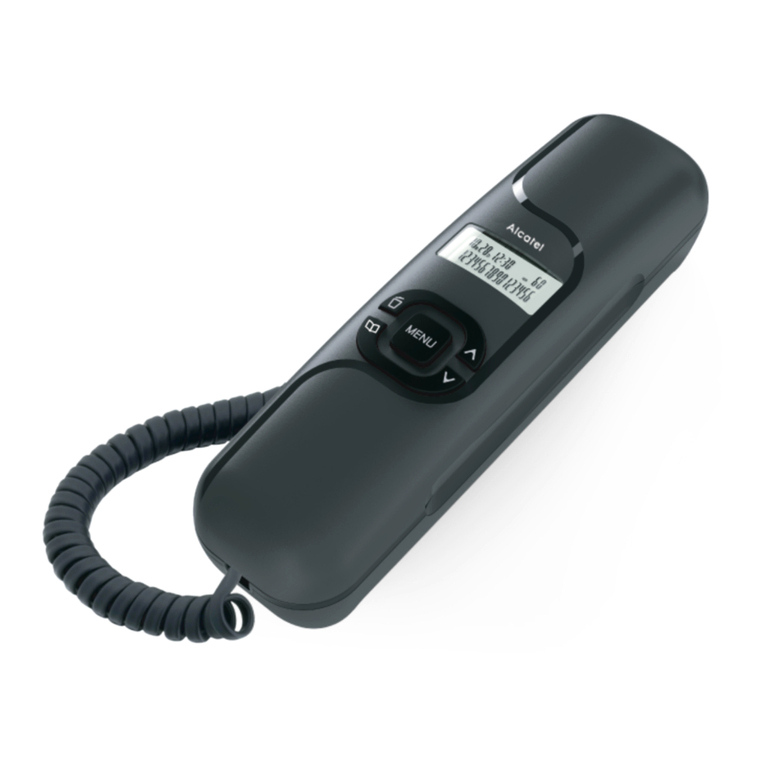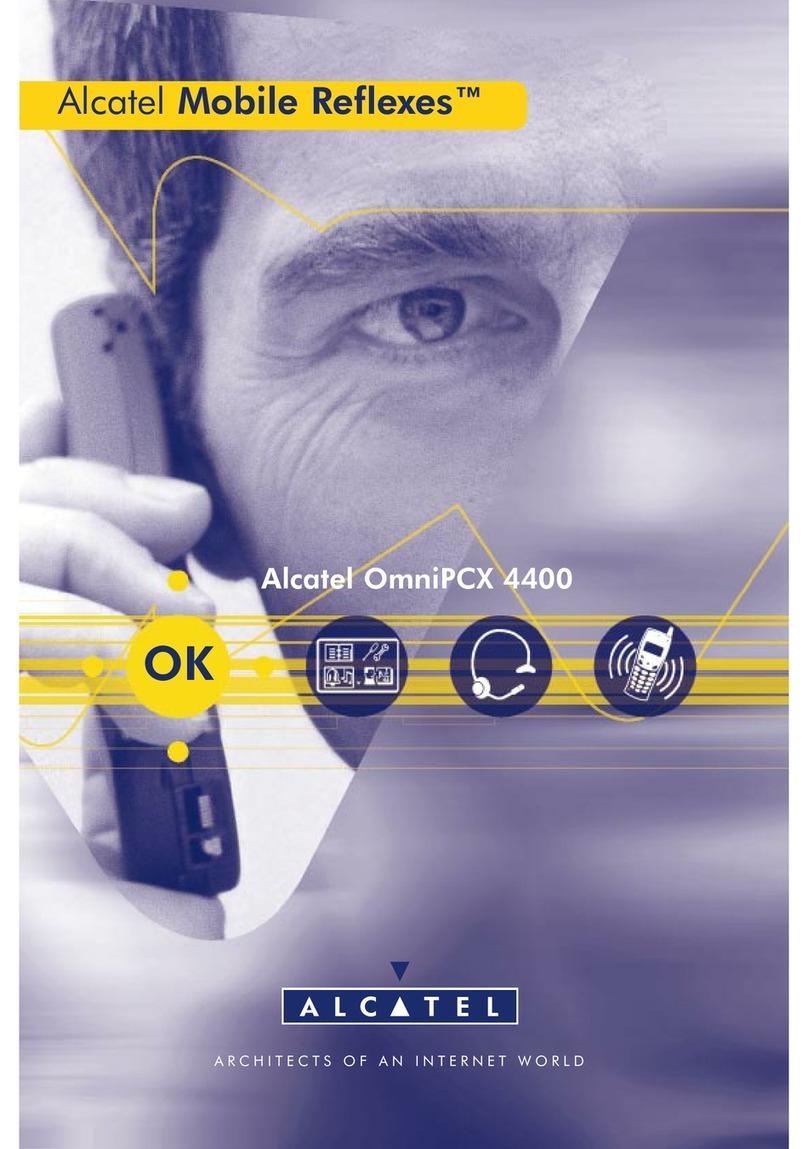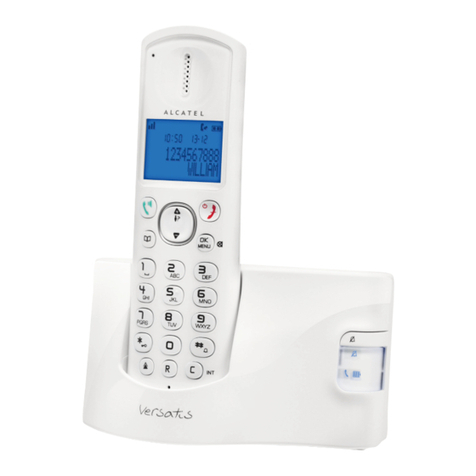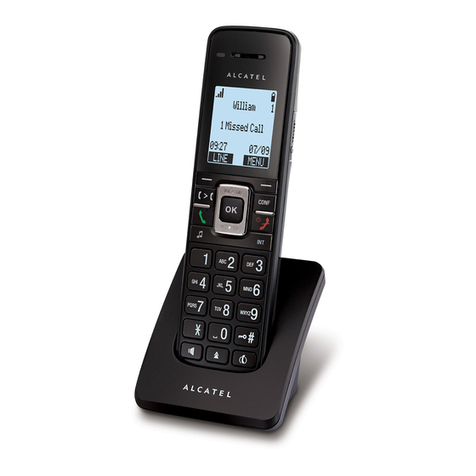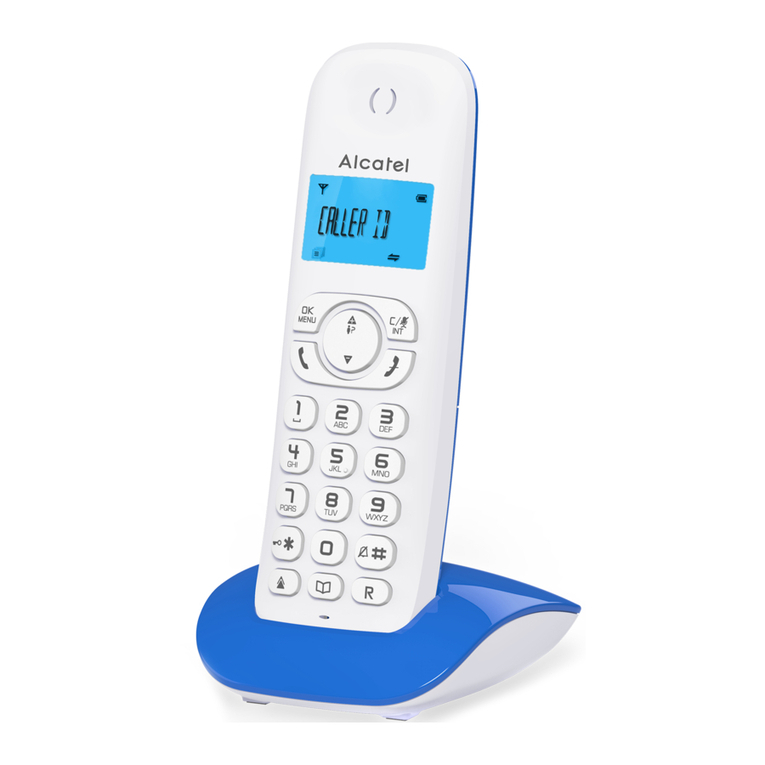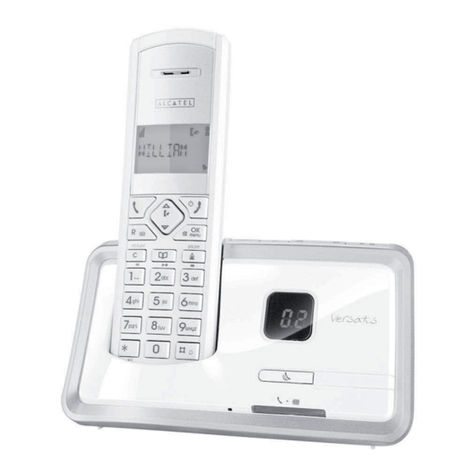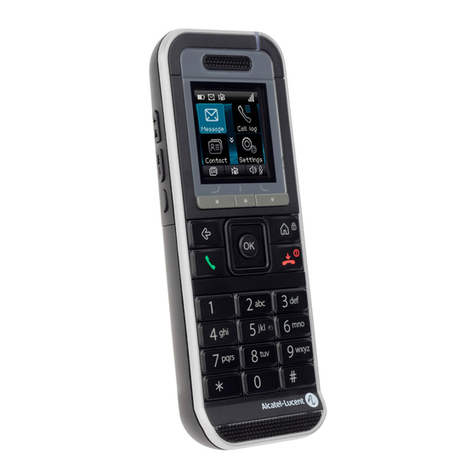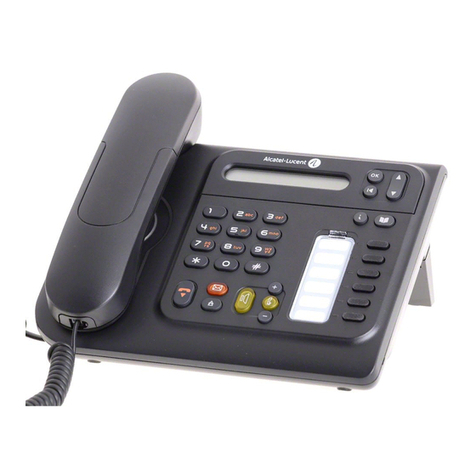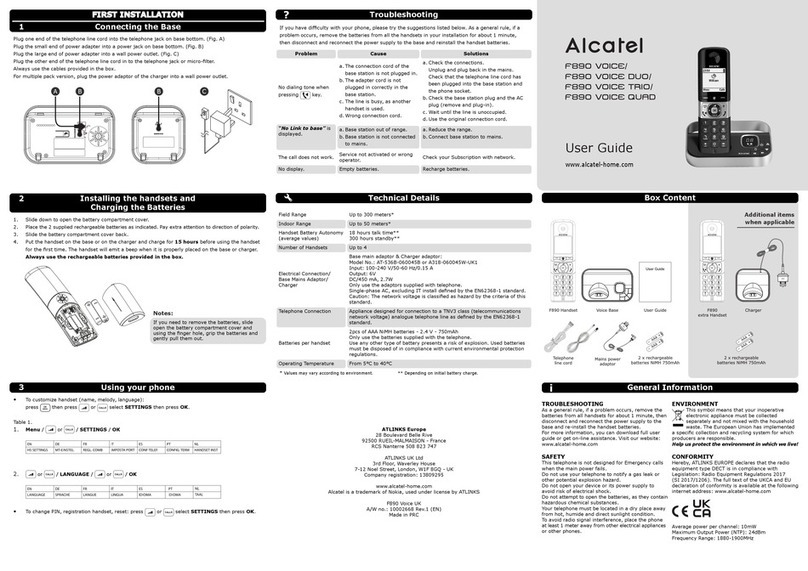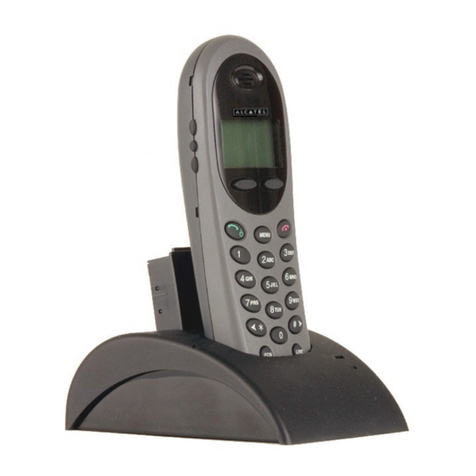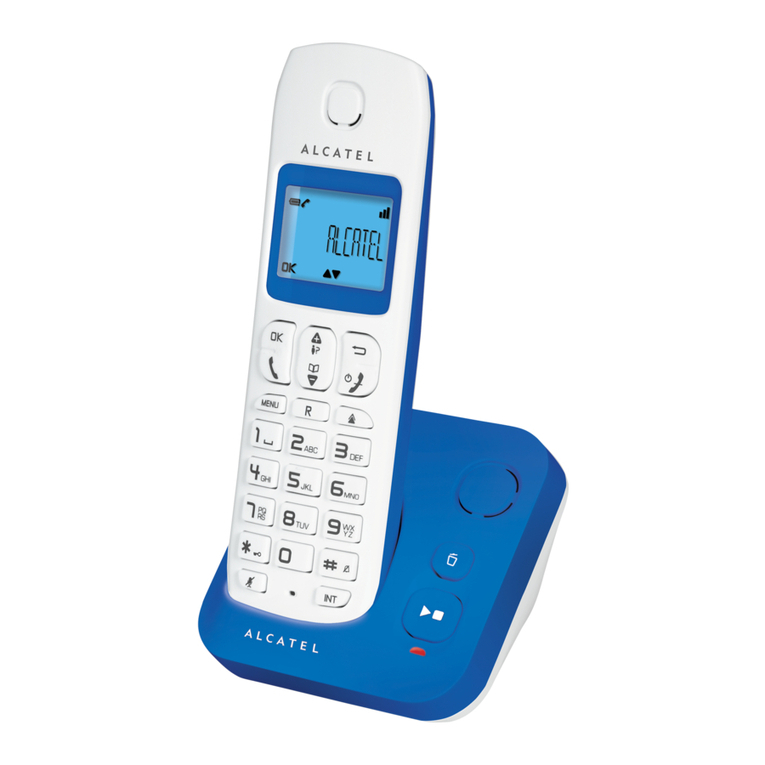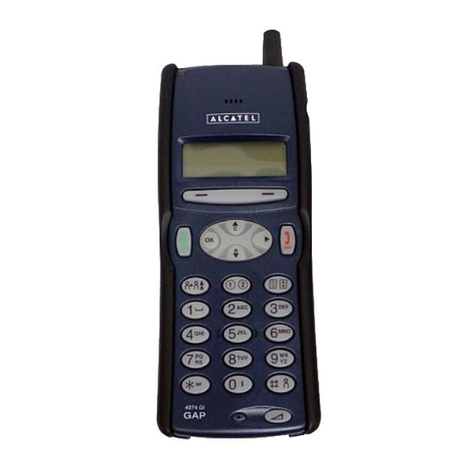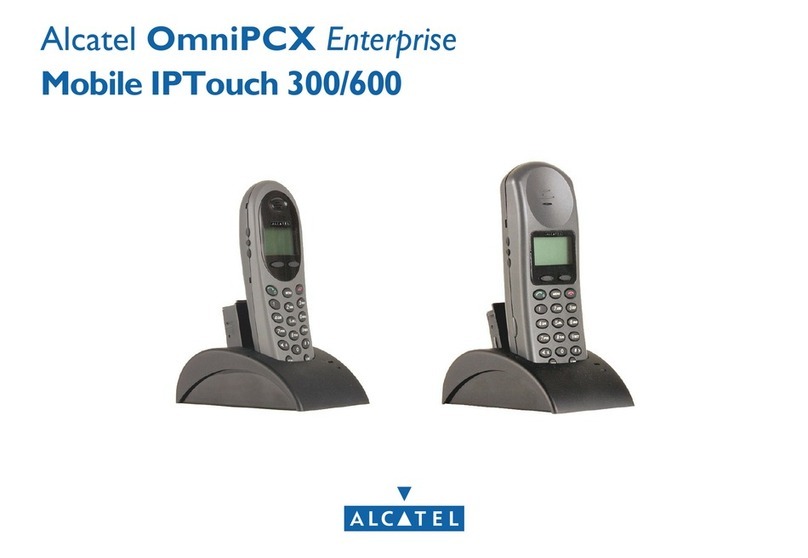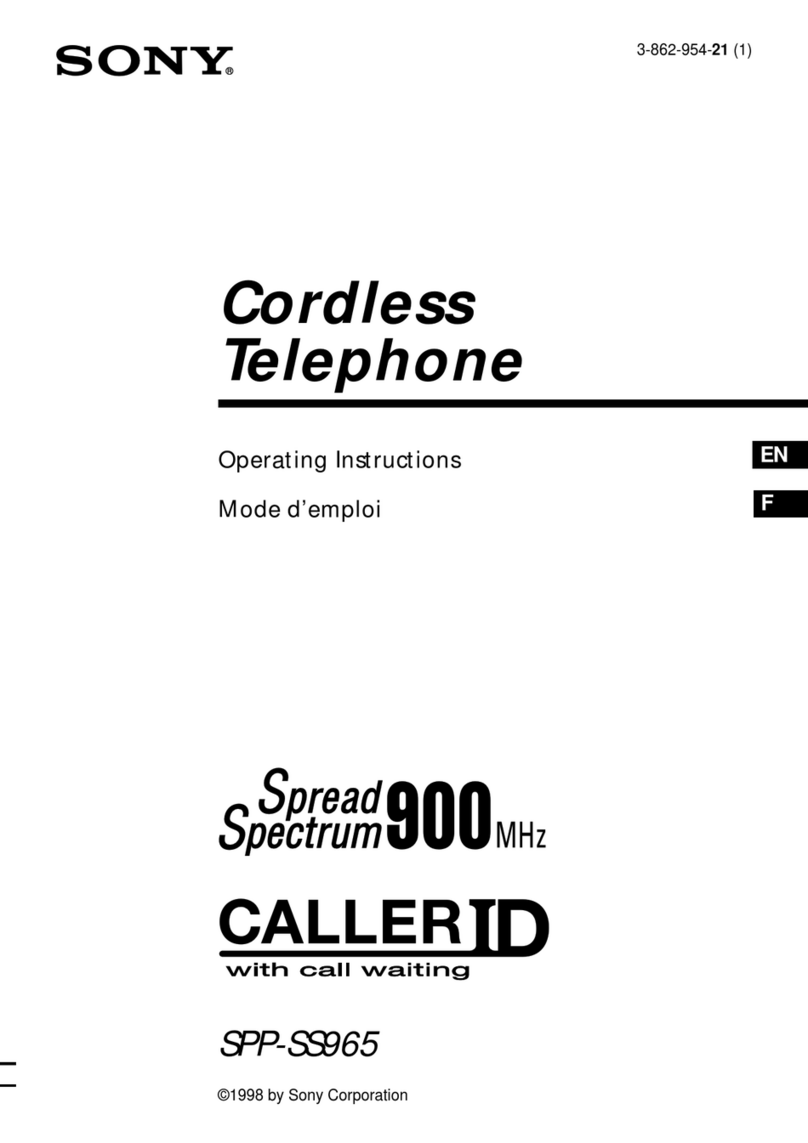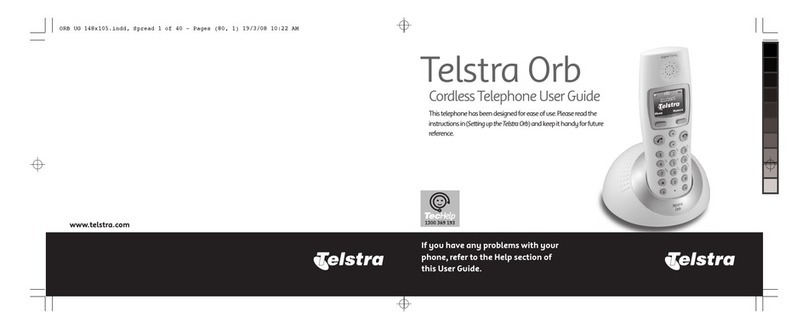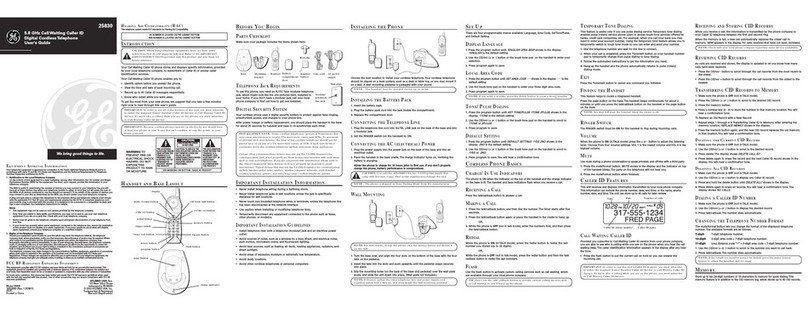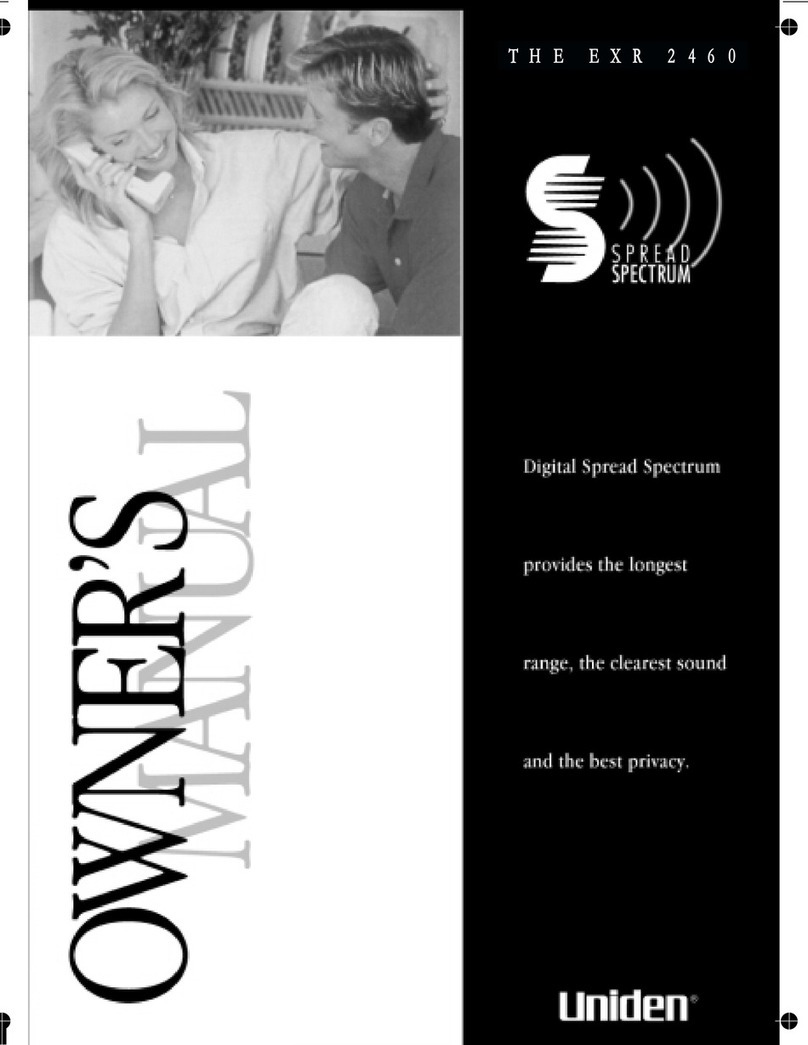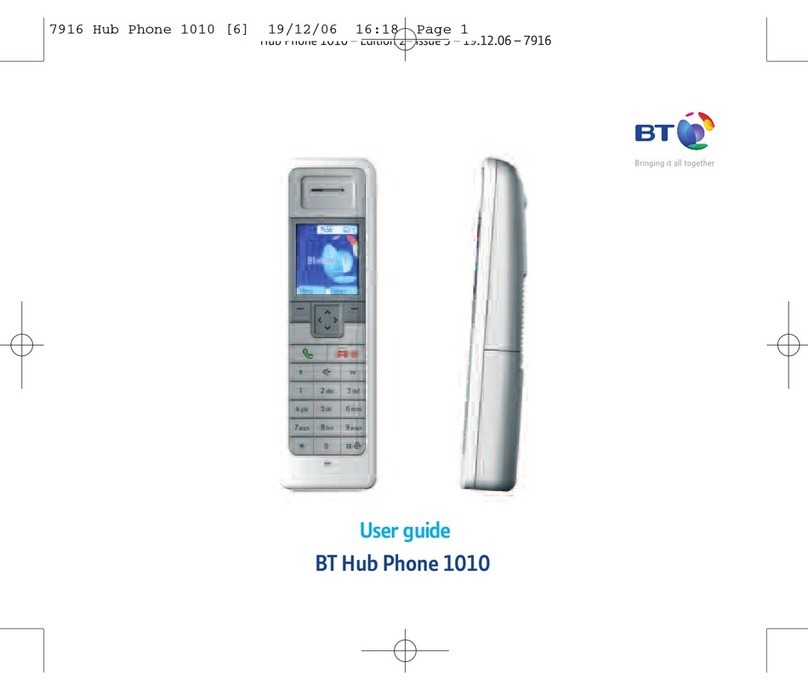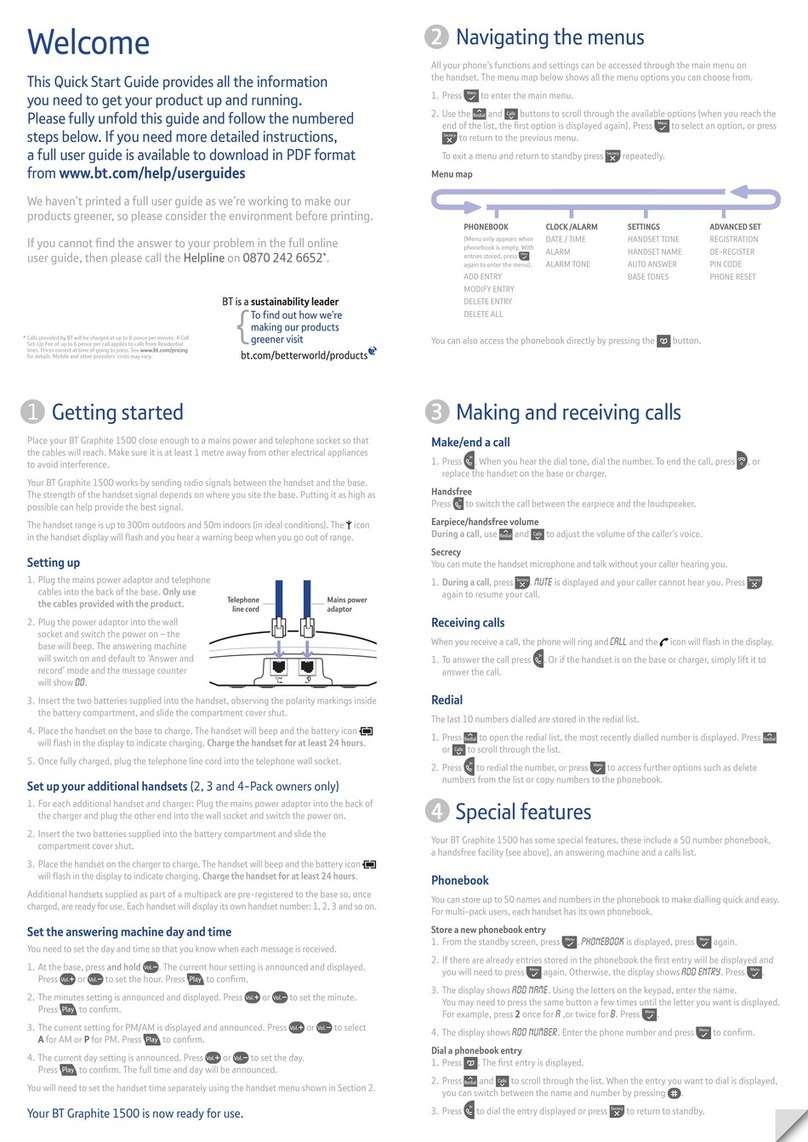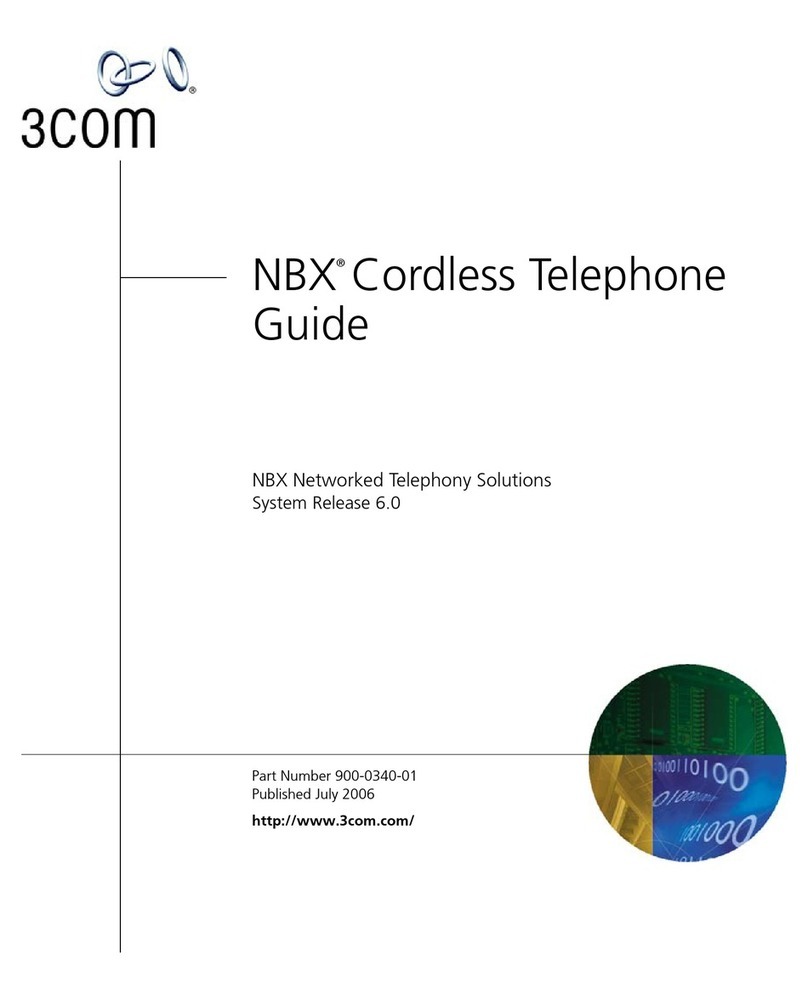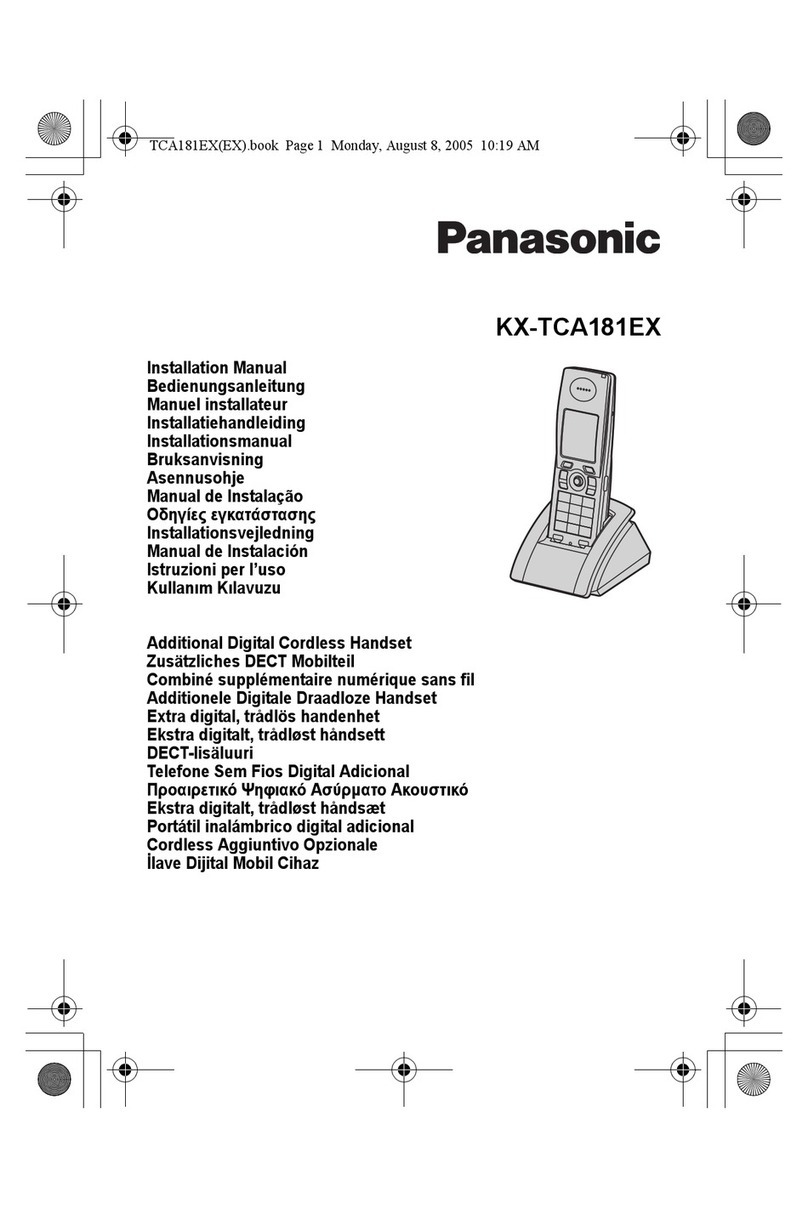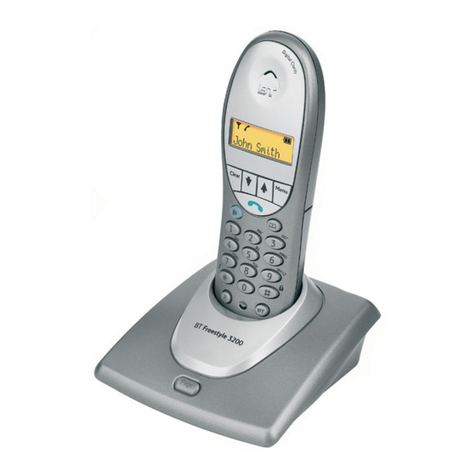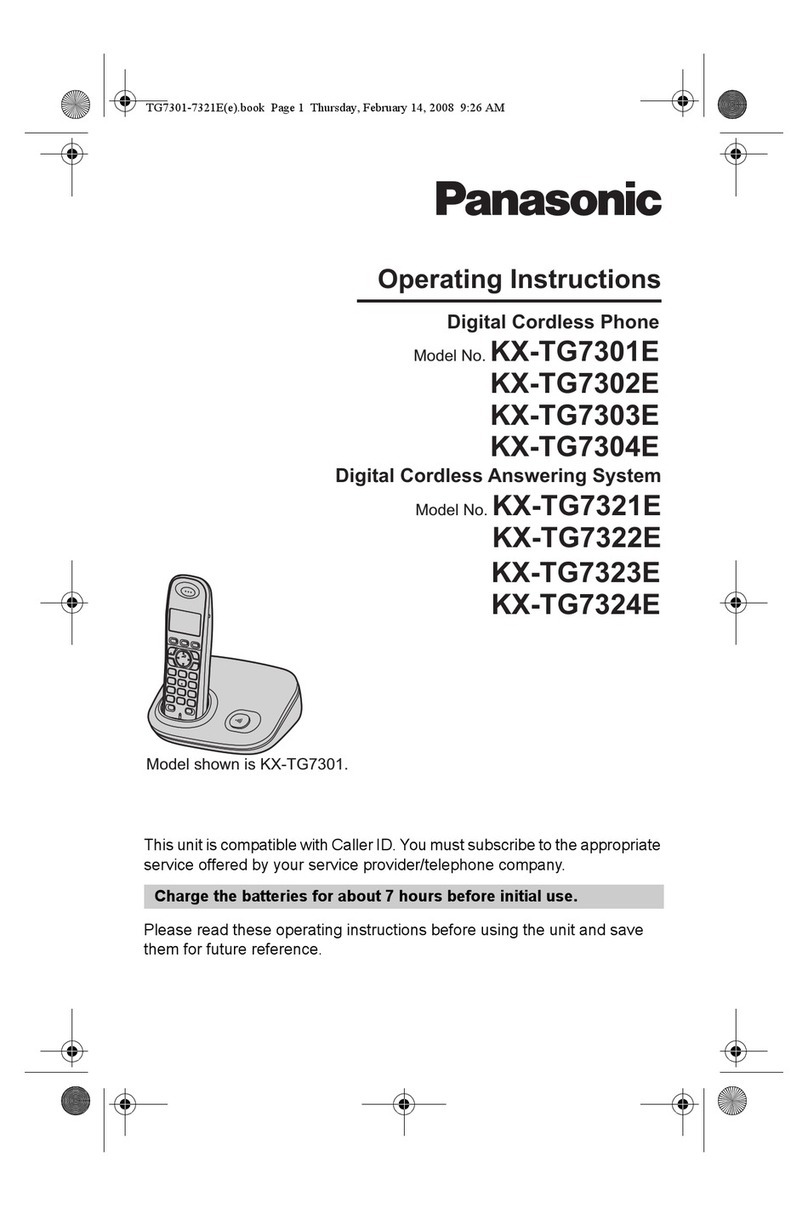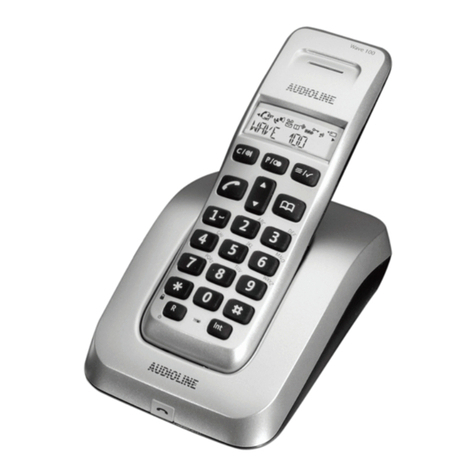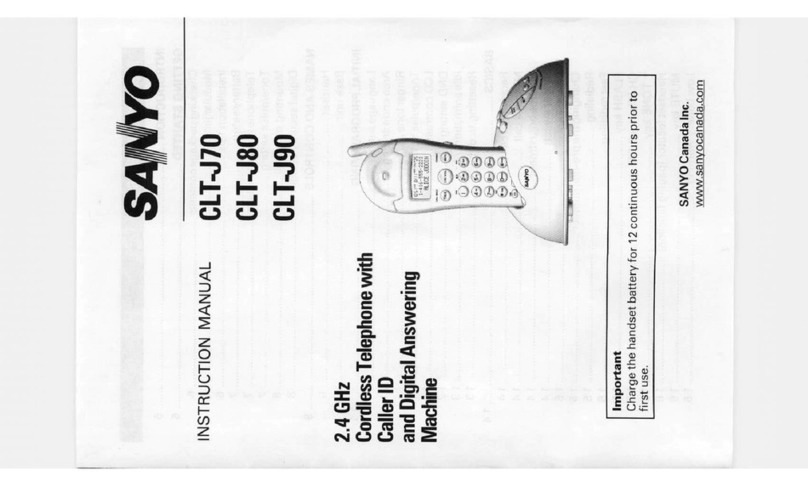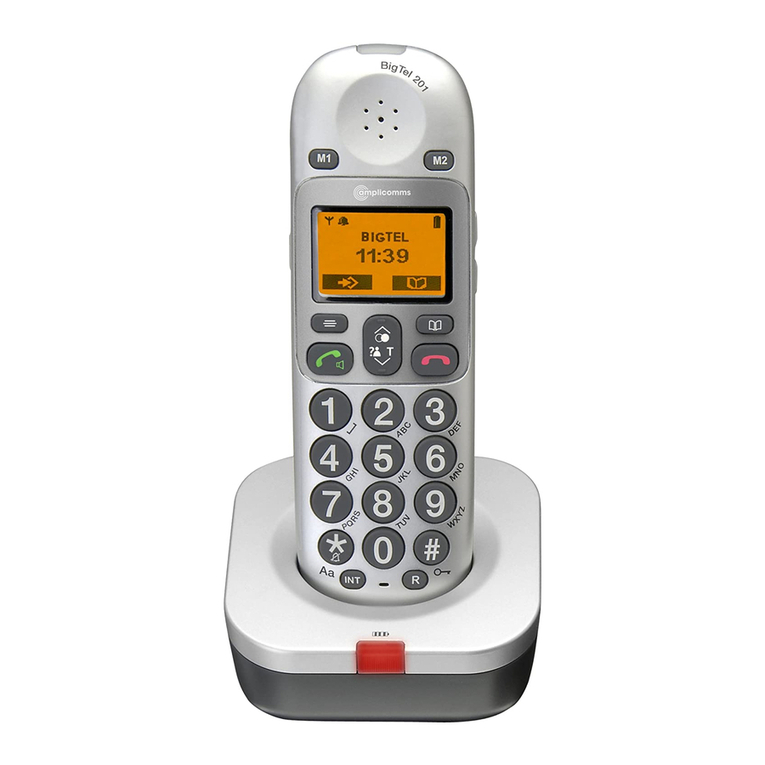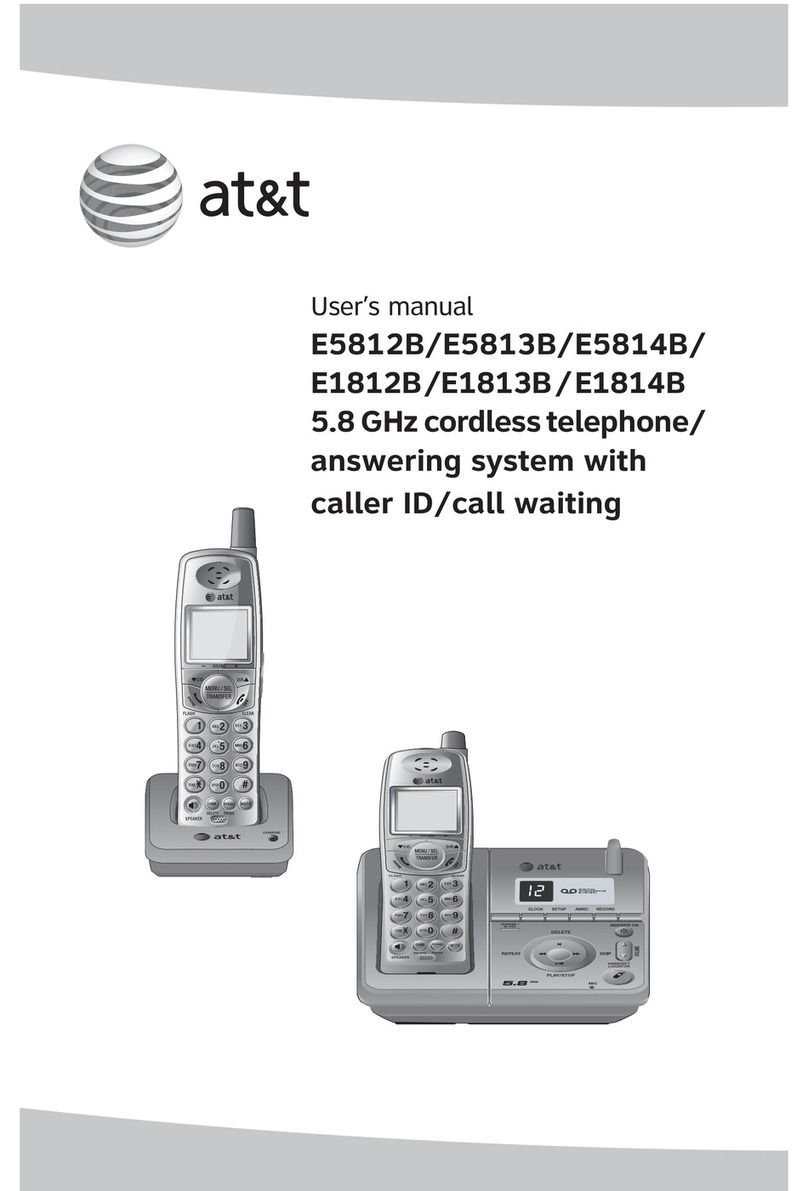
Getting to know your telephone
6
Telephone
Navigator
Lets you browse through several pages of
the display and select a line (the bottom line
is implicitly active).
Top line
Previous
page Next page
Bottom line
Guide key
This key lets you:
•obtain information about the
telephone
•program the keys
Mute key
so that your
correspondent can no
longer hear you.
Alphabetic keypad
Protected by a flap, used for call by
name, message service and pro-
gramming. You have a self-adhe-
sive 'Memo' label to stick inside the
flap.
Audio keys
Loudspeaker:
to share a conversation
to reduce loud-
speaker or re-
ceiver volume
to increase loud-
speaker or re-
ceiver volume
Hands free:
to make or answer a call without
lifting the receiver
Three-colour indicator light
The indicator light on your terminal enables you to monitor
statuses (colours and/or flashing):
Flashing green
: message received (voice or screen) or call
memory.
Orange fixed
: indicates traffic overload level 1 (1 is calls o
Flashing orange
: terminal on test.
Red fixed
: indicates traffic overload level 2 (call unanswered
on hold exceeds number of operator stations).
Flashing red
: several low priority system messages present
indicating a system hardware fault.
Programmable keys and icons
To make a call, activate a service or manage your calls.
Icons are associated with each of these keys:
Line icons : Function ic
Incoming call (flashing). Fun
Call in progress. Fun
Call on hold. Ter
Call on common hold.
Preprogrammed function keys:
Internal or outside line key.
Lines 1 to 15: Outside line key on your system.
Divert your calls to another terminal.
Access the various mail services.
Access your personal directory.
Group supervision.
Normal or restricted mode.
Make an ISDN call.
Transfer call to another terminal.
Some other keys can be programmed by your install
tion of your requirements:
Key which must be programmed by your installatio
Trunk 1
Hang-up key
To terminate a call or
programming.
